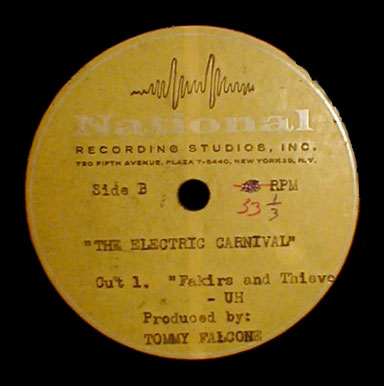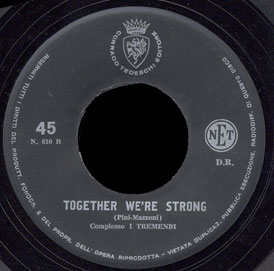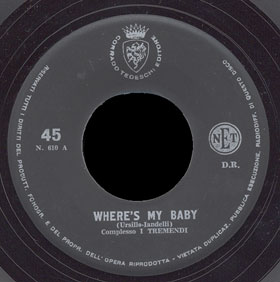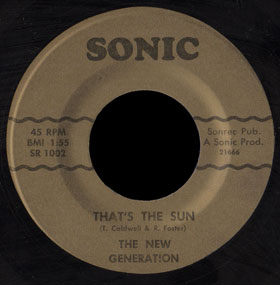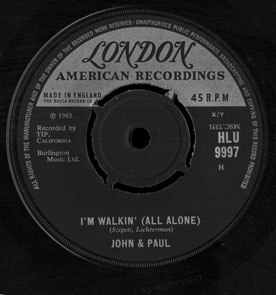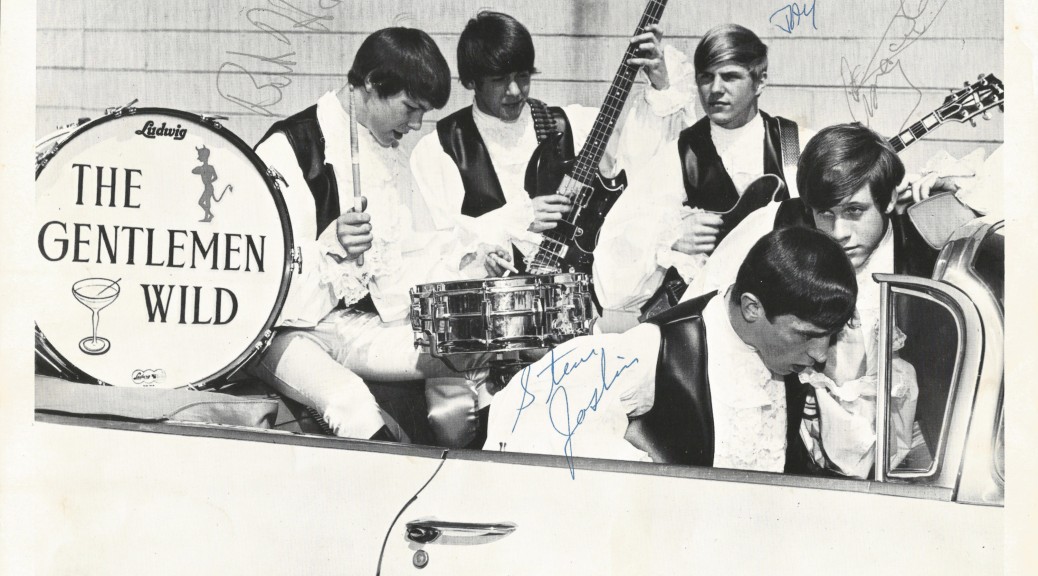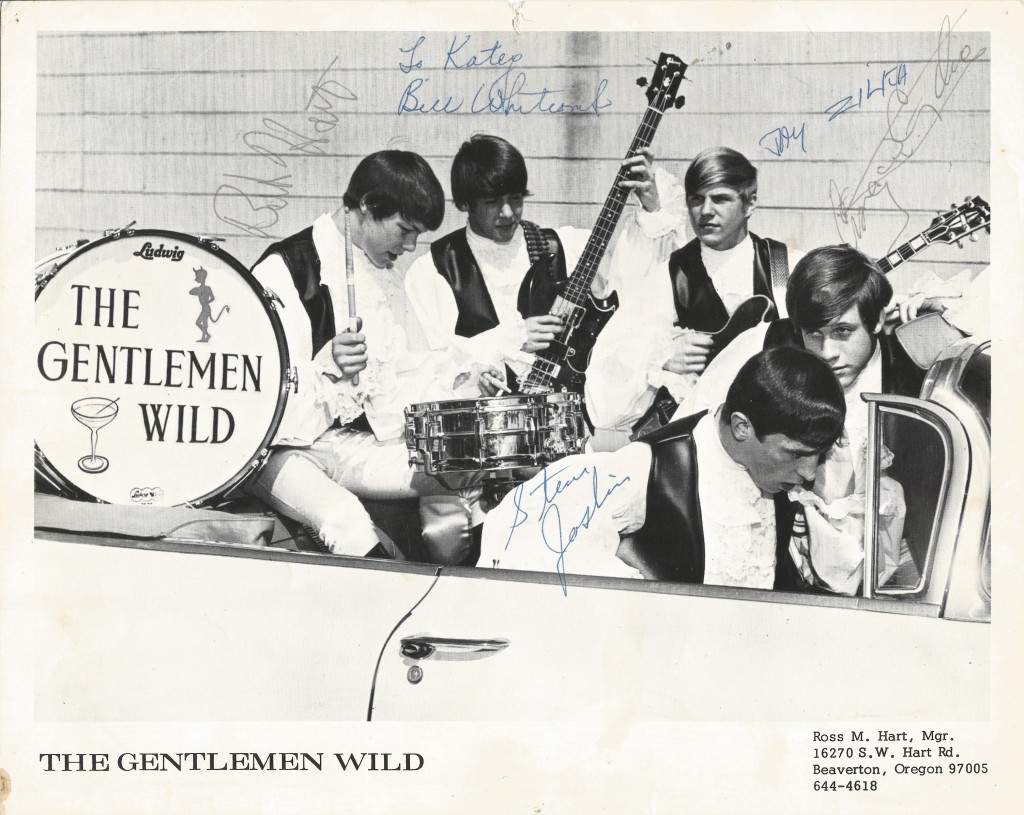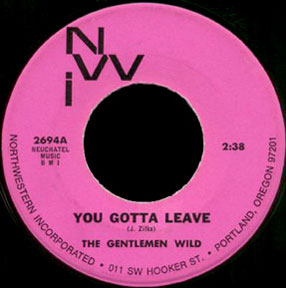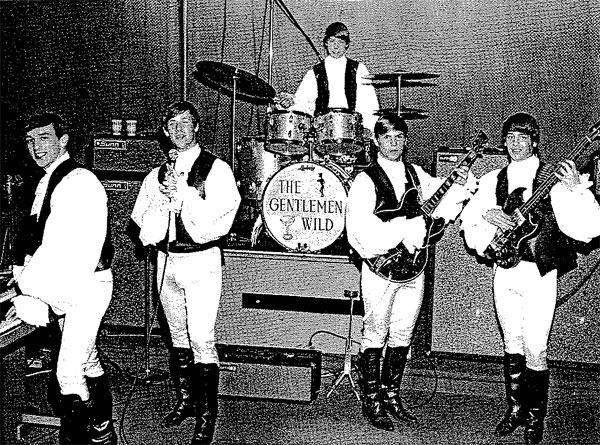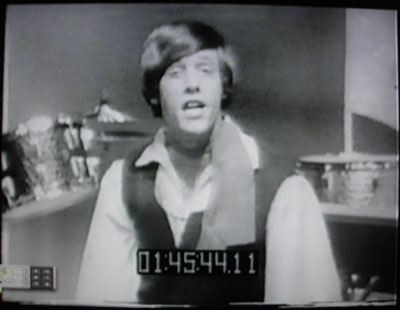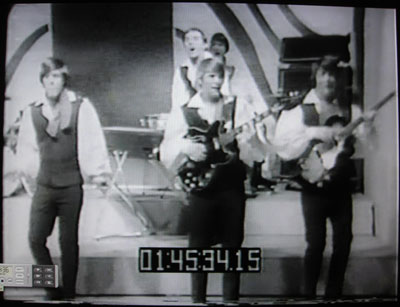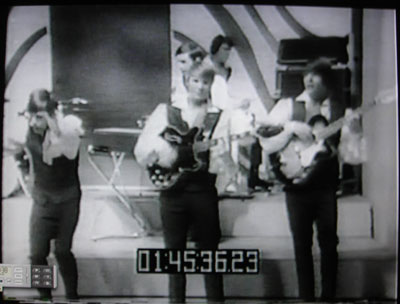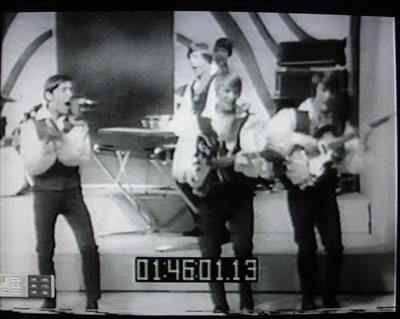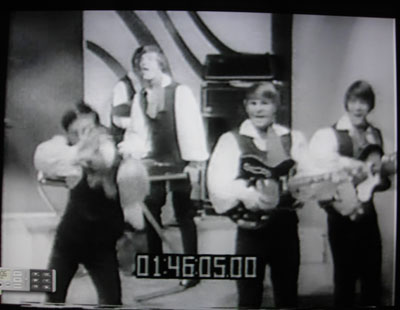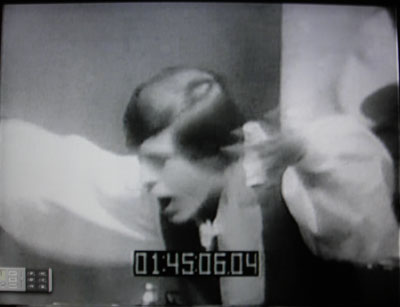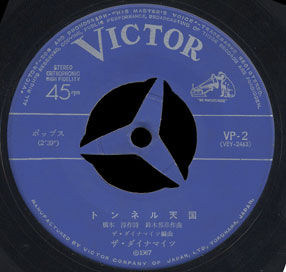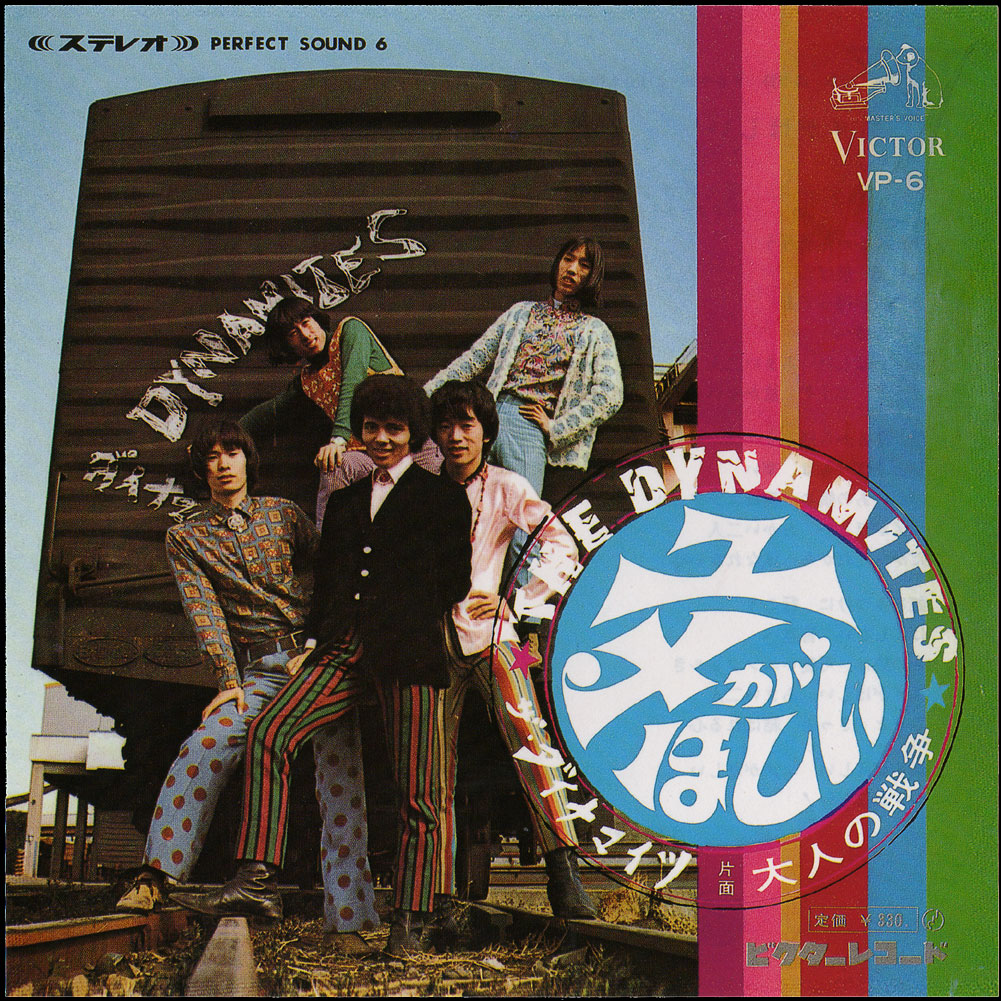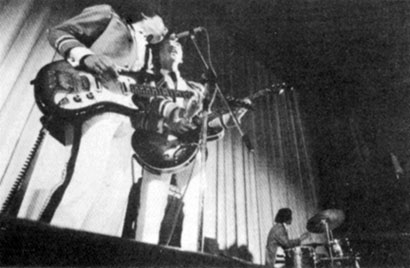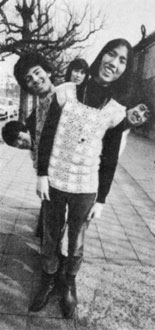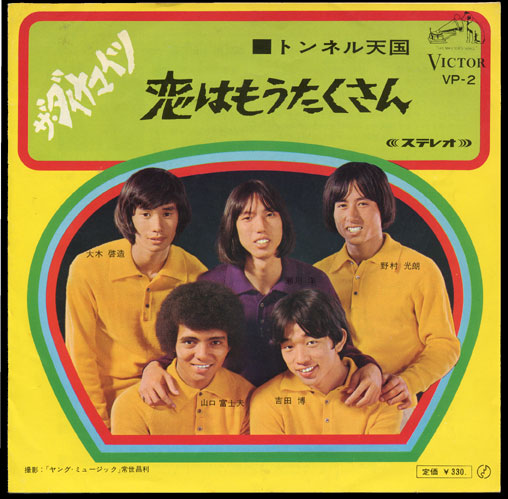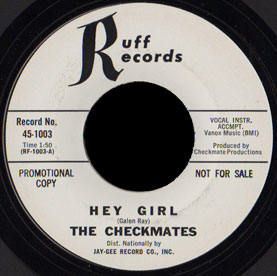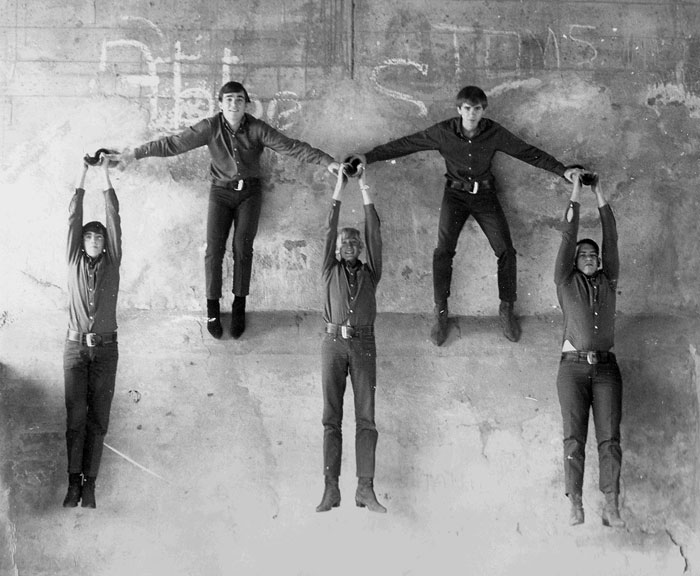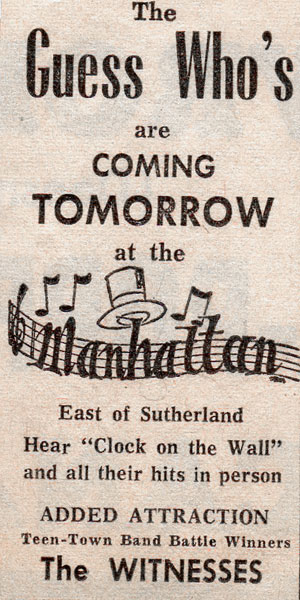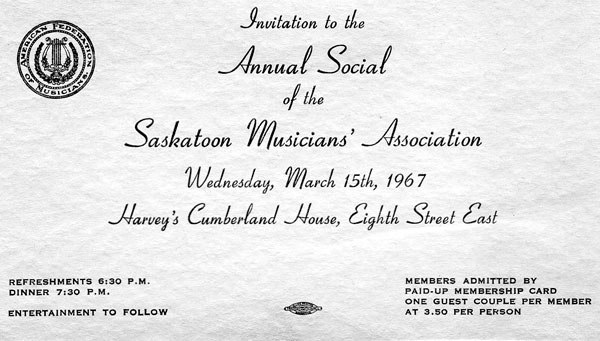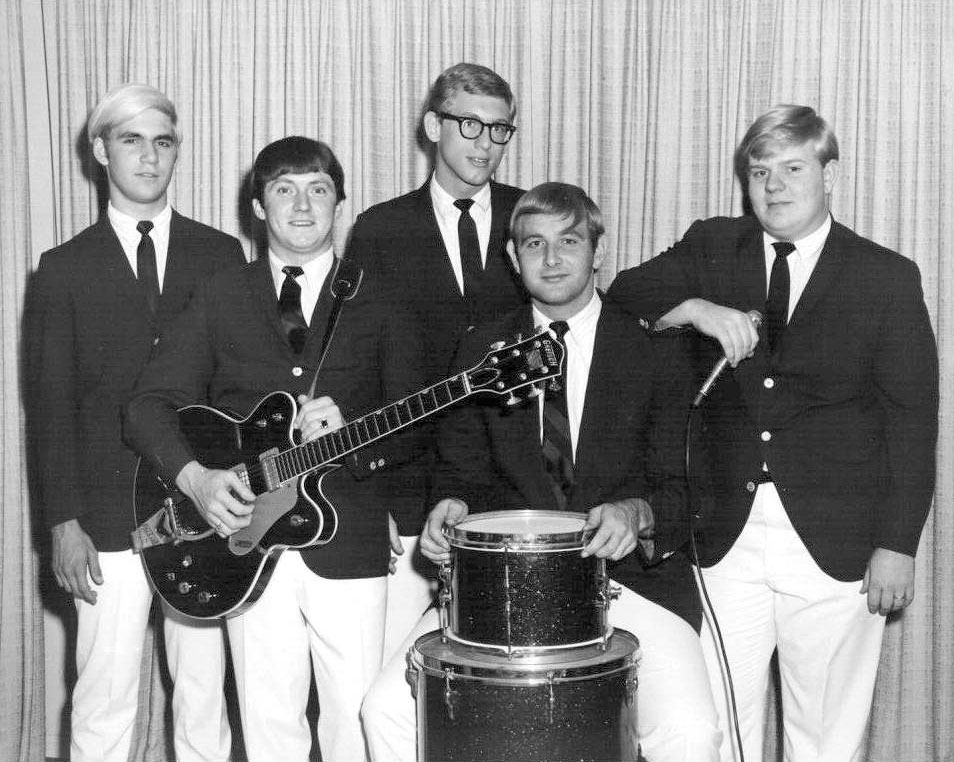
left to right Steve Hacker (bass), Larry Mattingly (rhythm guitar, vocals), Alan Hoover (lead guitar, backup vocals), Roger Walker (drums, vocals), Bob Ledbetter (lead vocalist) The Villains first 45, “Don’t Ever Leave Me” is a classic, featuring some of the most savage screams in garage music.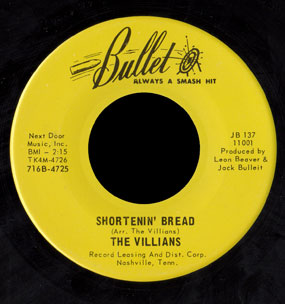
The Villains were long thought to be from Tennessee because their records were on the Bullet label from Nashville, but after hearing from lead guitarist and co-founder Alan Hoover, I can confirm they were from Evansville, Indiana, just 150 miles north of Nashville. Their records were produced by Leon Beaver (a country singer himself) and Jack Bulleit (the son of Jim Bulleit).
Here’s their story as told to me by Alan:
Actually, we spelled Villains correctly (after looking it up!), but many people put the a/i in the wrong order, including the guys at Bullet Records. Jim Bulleit (“pronounced Bullet”) of Nashville was the producer/owner of Bullet. He attempted to revive the label with our record, but I don’t know if he ever did get it going.
Anyway, the folk classic “Shortenin’ Bread” was the “A” side of our first record, not “Don’t Ever Leave Me”. Shortenin’ Bread acheived number one in Evansville, IN, for a good run, and also other towns in the area. We had to play it 2 or 3 times a gig or they wouldn’t let us leave. Really! Don’t Ever Leave Me was also locally popular, but much less so than Shortenin’ Bread. Also, Shortenin’ Bread was a 4-star pick hit in Cashbox Magazine, and (we were told by Bulleit) “broke” in the Tallahassee, Florida market and some other markets. I have also been told by several people over the years that the Bullwinkle cartoon show featured it in an episode, but I have never personally verified that. We actually heard it on an Astronauts (Boulder CO) record as a rock song in ’63, and thought we could improve on it.
Here is some history of the band:
Bob Ledbetter (Led) and I started the Villains in our hometown of Evansville, Indiana, in summer of 1963 (after we graduated from high school), with Roger Walker, a local drummer (we had no bass yet). I was lead guitar, taught Led some rhythm. Led was also our lead singer. We started playing beer parties, dances, etc. I went to college that fall, and Bob met Larry Mattingly (Midget), a local E’ville guitar player who sang good backup. They continued the band during the ’63/’64 school year, adding Bob’s girlfriend Julia Hadad for backup harmony and sex appeal. Still no bass guitar. Then, I quit college, came back in the summer of ’64.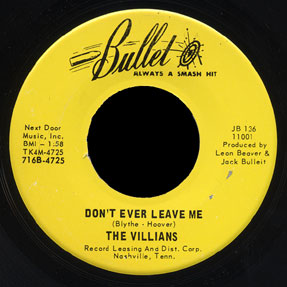
We practiced all day all summer and fall in Bob’s basement, improving our chops. In the fall of ’64, we picked up Steve Hacker, a local bass player. We played loud, solid rock, and crowds were attracted to the atmosphere that we created. Our reputation kept increasing, and we became the top local band. We had lots of fans/friends around the area. We were known for inciting rowdy behavior with our music, particularly if beer was running freely. The “Villains” name fit, although we chose it largly because we were from “the ‘ville”. We were definitely one of the party bands of all time, I’m not exaggerating either. Larry and Led had a natural comedic talent, which added to the showy aspects of the band. (They formed a “Led and Larry” duo for about 10 years after the Villains broke up, also known for inciting rowdiness.)
In ’65, we got a new drummer, Pat Ziemer, from another local band (The Aragons). Also, we picked up Bruce Blythe, a local keyboard player, from the same band. Bruce and my brother Mike Hoover (now a doctor in Evansville) wrote “Don’t Ever Leave Me”. We actually recorded Shortnin’ Bread/Don’t Ever Leave me in late summer of ’65 in Nashville, after Jim Bulleit saw us and liked what we were doing. He personally auditioned us in Evansville, and had us to his house for a cookout immediately after we recorded Shortenin’ Bread etc. He mentioned that he was reviving the label after being out of the business for some years.
It quickly became #1 in E’ville. A local DJ started managing our bookings, and we were playing all over the southern Indiana/Illinois, northern Kentucky area, with Shortenin’ Bread boosting our visibility in the area. We also regularly played fraternity parties in Evansville, IU (Bloomington IN) and Vanderbilt (Nashville), as well as numerous Louisville and Indinapolis gigs. Fraternities always asked us back, for obvious reasons.
Bruce Blythe had other ambitions, and left later in ’65. We picked up Danny Brown, another local keyboard player, to replace Bruce. In ’66, we recorded a Gary Bugg song called “Love is the Treasure”, our second record, and we put “Midnight Hour” on there too (actually the “A” side). Danny and Garry Bugg both came from another Evansville band, The Circles. We recorded that in the basement of a funeral home in Evansville!
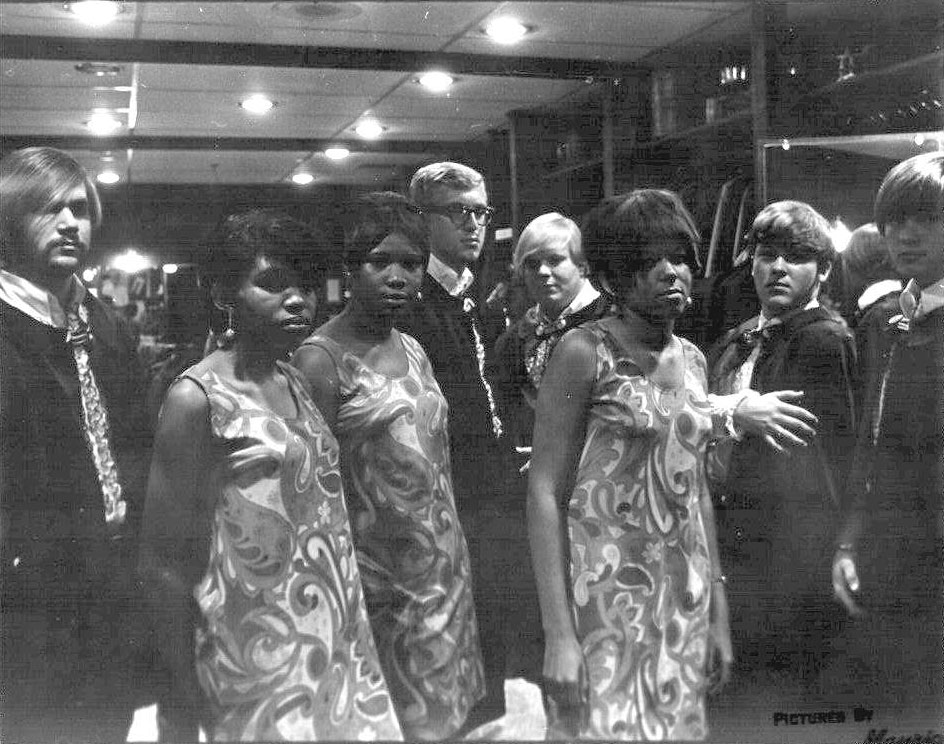
The Passions (l-r): Althea Mitchell, Sandy King, Cynthia BennetIn 1967, a local Supremes tribute group called “The Passions” joined us, as we started playing more and more soul. They were Cynthia Bennett (lead singer), Althea Mitchell, and Sandy King. These girls danced, sang, looked great in short dresses, and the crowds loved them. They liked our white soul, and sat in on a couple gigs. They were sweethearts. Everybody liked them, so we made them part of the band. About that time, we joined Triangle Talent of Louisville, KY, who put us into many venues that we didn’t previously have access to.We pretty much split up in ’67 or ’68, with Larry and me quitting. Led, Dan, a new drummer (Tommy Thompson), and Steve Hacker teamed up with super guitar player Denny Browder (who is said to have refused a membership with Chicago because of fear of flying), along with Cynthia of the Passions and formed a touring band. They might have called themselves The Villains, but no one can recall.
In 1984, we decided to do a 20-year reunion in Evansville, with Led, me, Larry, Pat, Danny, and Steve (our serious party lineup). It went over big, with all the original members showing up to jam. We continued this every year until 1997 with good crowds. The rowdiness would always recur, even though many of the audience were entirely too old to be behaving in such a manner. But, they couldn’t help themselves! Then, Led had a stroke Christmas Eve of 1997 at the young age of 52. The stroke damaged Led’s speech, and he can no longer sing. So, that sadly ended the Villains. He can still make me fall over laughing though, he is such a natural comic.
Everybody went on to have families, etc., some in professional fields. I became an engineer, designed, patented, and now make and sell a guitar invention called the Sustainiac, that produces infinite sustain for guitar. (Sustainiac.com) Larry Mattingly and Pat Ziemer are in sales, Danny Brown a counselor, Roger Walker a hairdresser, Steve Hacker still playing bass I think, Bruce is doing well as a nationally recognized consultant with business on dealing with catastrophic events. Cynthia Bennet became a nurse, but I don’t know about Althea Mitchell or Sandy King. I hope I got all the facts right.
Thank you Alan for your input and the great photos.
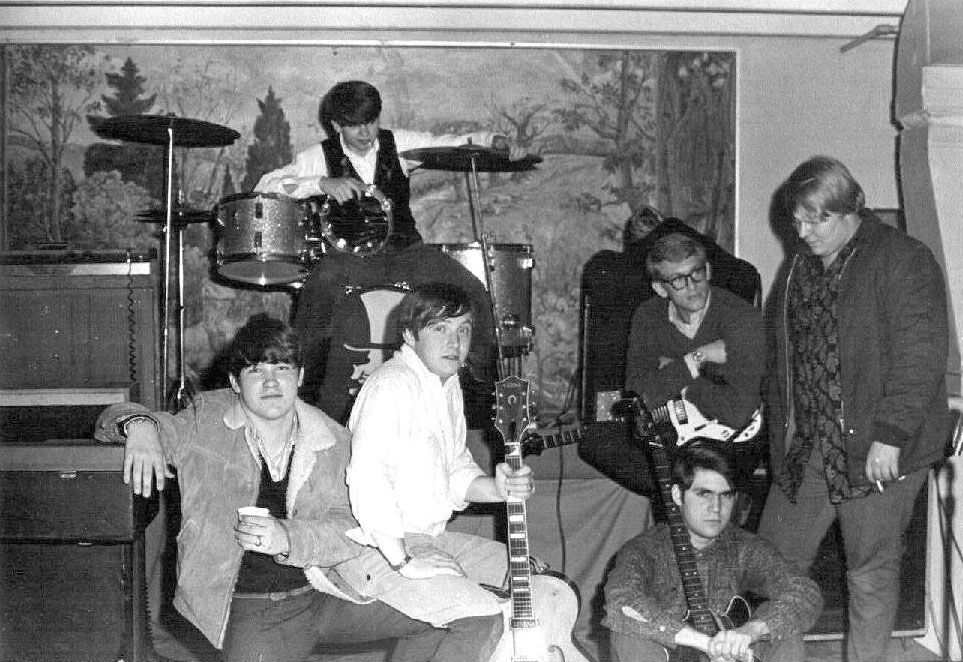
“Photo taken at the Surf Club (a regular Friday gig for us for a couple of years): Danny Brown (right, keyboards) and Pat Ziemer (our main drummer for most of our run) are shown in this picture.
We would pack the place with 400-500 people, and it got loud and rowdy without fail. Most of our old fans recall the Surf Club as some of the most fun of their youth years. By the way, Pat would usually stand on his drums during Shortnin’ Bread, and never fell off that I can remember!” – Alan Hoover Long Branch, New Jersey’s Inmates won a battle of the bands in 1966, leading to just one 45 on Columbia, the horrible novelty song “Local Town Drunk”. Columbia should have promoted the b-side instead, “You Tell Lies”, written by guitarist Ron Flannery.
Long Branch, New Jersey’s Inmates won a battle of the bands in 1966, leading to just one 45 on Columbia, the horrible novelty song “Local Town Drunk”. Columbia should have promoted the b-side instead, “You Tell Lies”, written by guitarist Ron Flannery.

